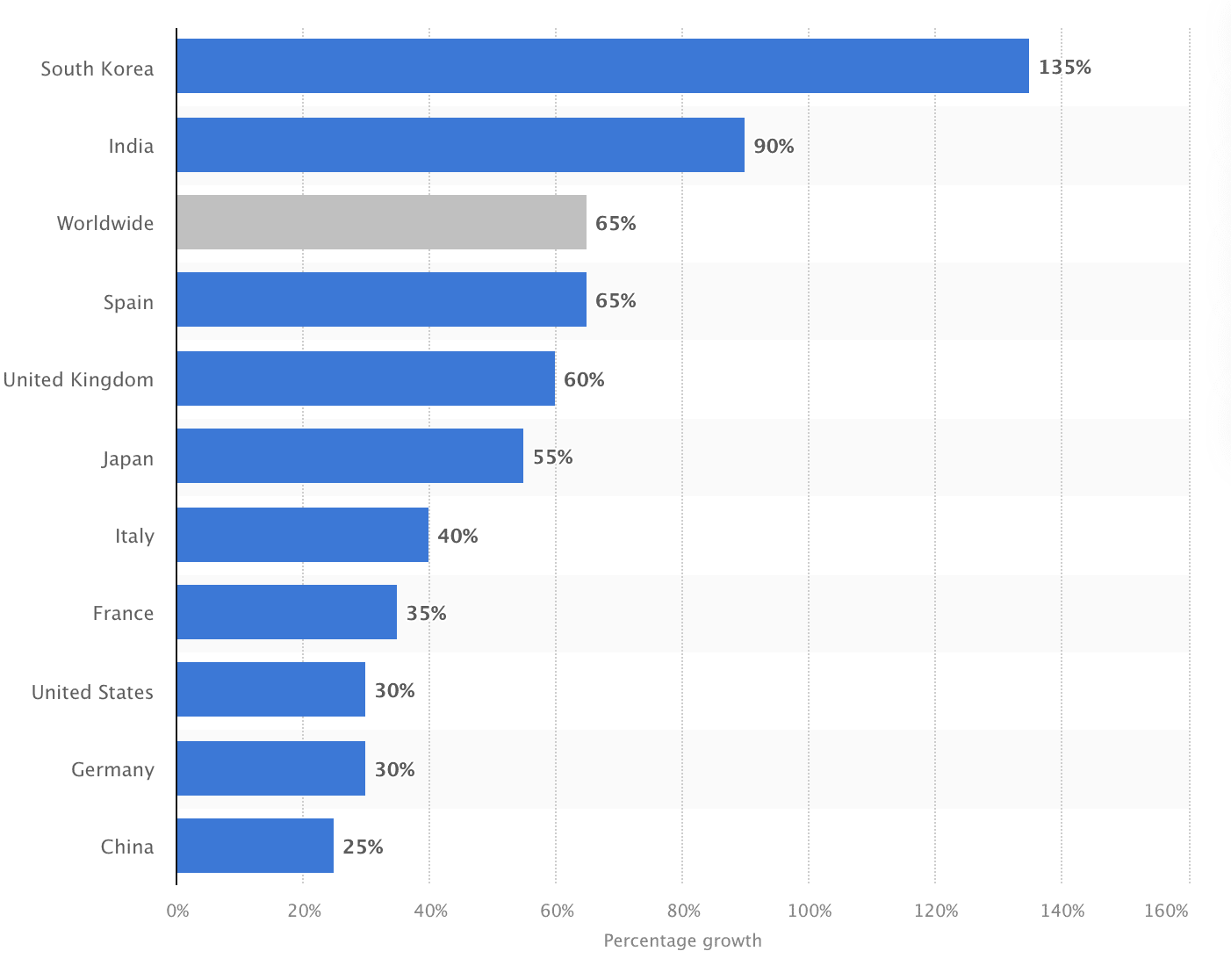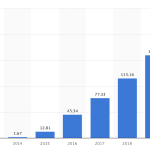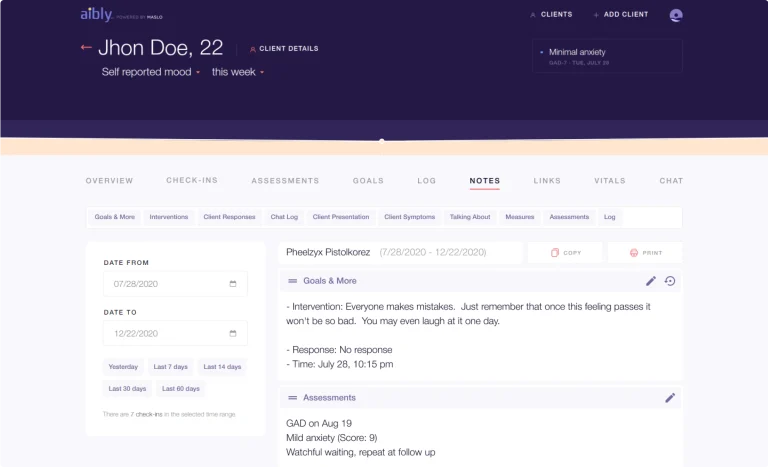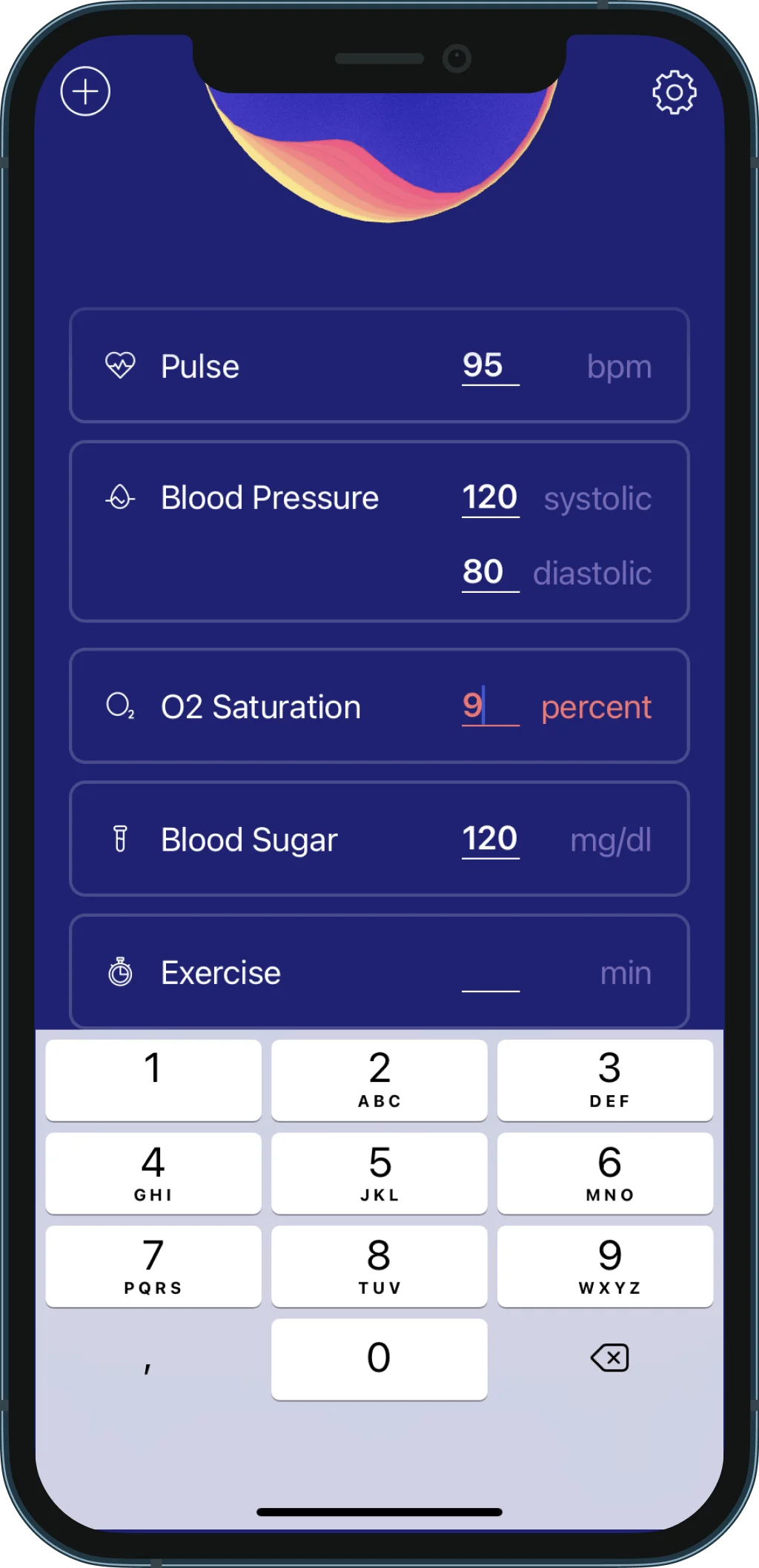
Updated: May 10, 2024
Published: April 13, 2022
MHealth app development has reached the peak of its popularity along with the start of the pandemic. Since then, people have experienced the usefulness of mHealth solutions, so this sphere remains highly demanded. That’s why it’s essential to know the necessary information about the mHealth app development to keep up with the time. In the article, we’ve covered the topics of the most common types of mHealth solutions, the main features of apps for doctors and patients. You’ll also find the information about the development process here, so continue reading if you’re interested in creating an innovative product.
List of The Content
- What is mHealth
- Types of mHealth solutions
- mHealth app development trends
- Applications for patients
- Applications for doctors
- mHealth app development process
- Aibly – an example of successful mHealth software
- In conclusion
MHealth applications, banking apps, e-learning platforms, and other types of solutions prove that the world is going through a digital transformation by leaps and bounds. All spheres that traditionally were offline and required the actual presence of people now have mobile apps almost for all activities.
Speaking of various digitalized industries, the statistic proves that mHealth apps are most demanded compared to other spheres. 67% of people use their phones to find information about health conditions. Online banking and real estate follow mHealth applications with a percentage of 57 and 44, respectively.
Mobile solutions for the healthcare industry have numerous advantages and can significantly enhance the quality of services. However, mHealth app development is somewhat complicated because it needs to meet the industry standards through HIPAA compliance. Besides, the mHealth apps should be highly secure and include some advanced features, such as artificial intelligence, blockchain, or the internet of things.
The mHealth app development industry is growing year by year. It got especially demanded since 2020. Look at the statistic that shows how the number of medical apps increased in 2020. For example, the number of mHealth apps in South Korea went through a 135% increase.
To prove the point of the mHealth app market’s popularity, let’s look at the number of e-prescriptions. In 2015, their amount in the US was only 12 million, while in 2020, their quantity reached 203 million.
What’s more interesting is that 87 million people use mHealth apps monthly.
However, despite the growing popularity of mHealth applications, there is a significant problem with them. Accenture says that about 66% of hospitals have mobile apps that their patients can use. Still, only 11% work well enough to provide customers with services. So, the quality of mHealth app development has room for improvement. That’s why, in this article, we’re going to discuss all important aspects of building mHealth solutions and provide a step-by-step guide on creating a product that will satisfy all customers’ needs.
Before we jump into the mHealth app development process, let’s clarify a bit what is mHealth for those who hear this term for the first time.
WHAT IS MHEALTH
So, what is mHealth? It stands for mobile health. This concept implies healthcare services that people can access through mobile devices, including:
- Smartphones
- Tablets
- PDAs (personal digital assistants)
- Wearable devices
Primarily, mobile devices allow people to gather health-related information and share it with practitioners for further analysis. Though this is the most common example of mHealth apps’ usage, there are numerous types of solutions, and we’ll discuss each of them later in the article.
MHealth is a subset of eHealth. Speaking of these, we should clarify each concept because they can often be mistaken for each other. MHealth is solely about mobile devices that complement the actual medical practices. MHealth apps are most often oriented toward patients. Meanwhile, eHealth is a broader notion that includes enterprise-level software for hospitals, lab systems, patient administration solutions, etc. Apple Heart Study, Fitbit, GoogleFit, and Samsung Health is among the most popular mHealth solutions.
Apart from extra convenience and fast service delivery, there are some other significant advantages of mHealth applications. Their effect is highly noticeable in developing countries with a low level of industrialization and the average rate of people’s satisfaction with life. Even among low-income segments of the population, the usage of mobile devices is widespread. People may not have enough money to visit doctors and do regular health check-ups in such world regions. However, they most likely have at least some mobile devices. MHealth provides a wide range of self-help apps that considerably enhance the standard of living and decrease the number of lethal outcomes. It illustrates why the mHealth app development is a so well-funded sphere, and it continues to develop. The yearly investments in mHealth constitute $1391 million.
To summarize, mHealth aims at providing the possibility for people to access the most necessary health data via their mobile devices. For now, let’s proceed to the types of mHealth solutions.
TYPES OF MHEALTH SOLUTIONS
MHealth solutions can be classified differently. First off, we can say that there are applications for doctors, patients, and clinics. However, speaking of types of mHealth apps, we’d like to discuss more general categories, such as:
- Communication systems
- Clinic applications
- Mobile wellness apps
Of course, there are many other mHealth apps, but these are most commonly used and demanded. Let’s describe each of them in more detail in the following paragraphs.
Communication Systems
The results of the doctors’ work heavily depend on the quality of communication with their patients. So, one of the most popular types of mHealth solutions is communication systems.
Usually, a significant percentage of hospital visits is not essential, and those problems can be easily handled via a phone call. People tend to overreact to some health conditions and, therefore, spend their time going to hospitals, while they can call or message a doctor to receive a fast answer.
MHealth communication systems imply various ways to contact a specialist, such as:
- Audio calls
- Video calls
- Chats
- Virtual assistants
When mHealth solutions weren’t as popular as they are now, both specialists and patients hesitated about the service quality. However, time has proven that the quality of communication has significantly improved.
Clinic Applications
MHealth app development is crucial for patients, doctors, and hospitals. Clinics highly benefit from digital solutions. There are mHealth apps of different complexity that are often integrated with hospital management system modules. Some perform only the essential functions, and some can eliminate the necessity of manual work.
Even the low-complexity mHealth application allows scheduling, billing, and medical histories. More advanced software also provides access to real-time data, such as health screening and lab tests. Via such software, doctors can share prescriptions with patients, immediately appearing in a patient’s medical history.
The main advantage of mHealth app development for hospitals is system integrity. When all clinic workers use one mHealth system, the data from all departments is interconnected and can be accessed and managed efficiently.
Usually, in terms of hospital systems, mHealth software developers implement the blockchain approach that results in high security and data protection. We’ll discuss its advantages later in the article.
Mobile Wellness Apps
Nowadays, we hear about self-care and personal well-being from everywhere. That’s why mobile wellness apps are top-rated among people regardless of their age or status.
Wellness mHealth solutions primarily focus on those health spheres that don’t require necessary doctor’s engagement. They usually relate to nutrition, sleep, gender-specific data, physical activities, mental health, meds intake tracking, etc.
Personal wellness applications aren’t connected to the hospital systems and don’t require communication with doctors. Such apps are all about the data that people can measure themselves.
For example, it can be an app that tracks sleep cycles and provides recommendations for enhancing sleep quality. Medication intake tracking systems also relate to wellness apps. A user establishes a schedule according to which he should take meds, and the app sends notifications when it’s time to take a pill. Healthy nutrition apps are a part of this category as well. They may include calories and steps tracking, water intake, etc. Such apps are usually connected with the Health app and take most information from it.
One more advantage of wellness apps is that they don’t need HIPAA compliance. So, if you don’t want to deal with some regulatory aspects, a wellness app would be an excellent option for mHealth app development.
MHEALTH APP DEVELOPMENT TRENDS
If you’re at the phase of planning mHealth app development and think about what else you should know to make everything right, consider the most demanded technology trends that are often used in mobile health applications.
Artificial Intelligence And Chatbots
Let’s start with artificial intelligence. This technology is beneficial, especially regarding the significant number of people needing doctors’ help. Virtual assistants, most often presented as chatbots, decrease the load on doctors. Usually, users ask for appointments with specialists when the problem doesn’t require a doctor’s intervention. That’s when chatbots become highly helpful. Typically, they determine the extent of the users’ issues or define a doctor to turn to. In addition, if a virtual assistant decides that the question you’re coming up with can be solved without a doctor, it’ll give you the necessary recommendations to follow. This is how AI can be helpful in self-help applications. However, artificial intelligence performs much greater tasks. For example, based on big data gathered by ML, it helps doctors diagnose a patient and make prescriptions.
Video Conferencing
When video conferencing became an integral part of mHealth solution, the quality of services provided by doctors increased significantly. First off, face-to-face communication enhances trust and builds more stable customer relationships. Secondly, the possibility of using the video helps patients describe the problem in more detail. For example, if a person has a stomachache, it’s easier to point to where exactly it hurts rather than express it verbally.
Moreover, there are some conditions when the visual examination is necessary, but the physical state is too bad to go to the hospital. It can be some kind of rash complemented by a fever. Having the possibility to have a video call with a specialist efficiently solves the problem. Via the video call, a doctor can examine the nature of the rash, and a client with a fever doesn’t have to leave his home and therefore secures other people from getting an infection.
Blockchain
Speaking of mHealth app development, it’s necessary to consider all security issues. Healthcare applications deal with sensitive patients’ data, and the losses are high in the case of data leakage, for example.
This statistic demonstrates the scope of data loss and hacked programs from 2009 to 2021. You can see that enormous numbers of people were affected by data breaches. Blockchain aims at eliminating all problems with security due to the structure of the system.
Blockchain systems store data in interconnected blocks, and each of them has a unique specific hashcode. When some data is placed into a particular block, a person responsible for it decides whether the data can be changed or just viewed and who exactly has access to it.
Of course, the implementation of blockchain requires some specific skills. Still, it’s worth investing in it because it will save a lot of resources in the long run and prevent you from worrying about possible data breaches.
Internet Of Things
There are numerous types of IoT devices. Some of them help monitor the serviceability of the stationary equipment, others aim at keeping track of patients’ health records, and probably the most popular type is wearable IoT devices. The last type is most commonly employed in mHealth applications. Smartwatches are the first thing that comes to mind while speaking of IoT in mHealth.
There’s a common misconception that people can use this device only for fitness goals, such as gaining or losing weight or counting calories. However, smartwatches also track users’ heart rate, blood pressure, water intake, etc.
Via the mHealth apps, this data can be transferred to a doctor for further analysis. Such information about a patient can be helpful as the side data to some diseases. For example, if a person visits a doctor with the flu, it’s reasonable for a professional to determine the client’s average blood pressure or heart rate. That’s when smartwatches or other wearable devices may become helpful.
MHEALTH APP DEVELOPMENT: PATIENT’S APPS
We can divide all mHealth solutions into two main categories: apps for patients and doctors. However, each category has its subcategories. Patient applications include:
- Apps for scheduling doctor appointments
- Medication intake reminders
- Healthy lifestyle
Let’s discuss each type in more detail.
Applications for setting appointments usually contain two elements: a doctor’s app and a client’s app. The main features of such an app are a calendar, notifications, reminders, and chat. Let’s see what the app flow will look like. A doctor fills the calendar with all the meetings that he has. The app processes this data, and on a user’s app, it displays only the available spots. The user chooses the date and time and schedules the appointment. The doctor receives a notification and confirms or declines the appointment. Then, a user gets a message with a confirmation or cancelation of the meeting. Usually, a user can shortly describe the problem before going to the hospital so that a doctor can instantly give some recommendations to a patient. Both the user and doctor can set up a reminder with this all done. The app also contains a chat if urgent questions can’t wait for a meeting.
There’s also a particular kind of app that aims at keeping track of one’s medication intake. They are called reminders. Such an app doesn’t need to include any complex features apart from a reminder. These mHealth solutions are beneficial for people with chronic conditions or those who temporarily need to take a lot of meds daily. When a user downloads a reminder app, he needs to fill in the information about when the medications have to be taken. Based on this information, the application sends notifications to a user.
We’ve mentioned the case when such apps are used for reminding to take medication. However, they can also be used by people with chronic conditions. They need to be reminded not only of meds intake but also about some procedures. It’s not a problem when a doctor in the hospital observes a person. However, in some cases, it’s easier for people to stay at home and visit hospitals from time to time. In such a situation, it’s convenient to have an app that can remind someone to get tested or see a doctor for some medical treatments.
The last but not the least type of patients apps is the healthy lifestyle mHealth solutions. Such applications aren’t designed to deal with any severe conditions. They are primarily for people who want to maintain their physical and mental well-being. Healthy lifestyle apps are usually multifunctional. They allow controlling the water and calorie intake, steps. If you have some wearable devices, you can see your heart rate or blood pressure in a healthy lifestyle app. Usually, they also include meditation modules or reminders to take a walk or just breathe. In a world where everyone is constantly overwhelmed with something, such applications are quite beneficial.
MHEALTH DEVELOPMENT: DOCTOR’S APPS
Doctor mHealth solutions are usually more complicated compared to customer applications. They require a bigger number of integrations and more complex features. Sometimes there also appear some challenges with HIPAA compliance. However, this problem mainly relates to the hospital software. Among the most common types of doctor apps, there are:
- E-prescriptions
- EHR
- Appointment scheduling apps
- Medical education software
E-prescribing applications are in high demand among doctors and their patients. They allow eliminating unnecessary paperwork for both sides. E-prescription apps can work with or without an EHR system and usually don’t require establishing compliance. Such apps provide doctors with the forms they need to fill out to make an electronic prescription that can later be transferred to the clients.
EHR stands for an electronic health record. It is more complicated to develop because it deals with lots of information. EHR stores all data related to one’s health in one device. EHR is usually not a separate application. It is a part of a more massive hospital system. That’s why the information in the EHR component can be shared with other hospital workers if needed.
The next app type is the appointment apps we’ve already described earlier. The only difference between the client and doctor apps is that a doctor’s app contains another set of features.
Mobile education software is not the most popular type of mHealth solutions, but it is gaining popularity day by day. Such apps don’t deal with patients or some important health-related data. Their purpose is self-education. Education software contains lectures and manuals related to various topics. They can be used by doctors as well as by all comers.
Well, we’ve figured out the most popular types of mHealth solutions. For now, let’s jump into the mHealth app development process and see what stages it contains.
MHEALTH APP DEVELOPMENT PROCESS
MHealth app development doesn’t significantly differ from the development of other app types. The only difference is that some mHealth solutions require establishing HIPAA compliance. Apart from that, the software goes through the 5 main stages:
- Discovery
- UI/UX design
- Development
- Testing
- Support and maintenance
During the discovery, a business analyst gathers the requirements for a future product. He talks to the product owner or company’s representatives and forms a detailed plan of developing features. All necessary information about the product is placed in an SRS document. It includes user stories, acceptance criteria, and screen wireframes.
The next stage is UI/UX design. A couple of designers use the SRS document to know what elements each screen should contain. They produce mockups and, in some cases, a prototype as well.
Later, the team jumps to coding. They also use the documentation formed during the discovery. It describes what methodology should be followed for the project, the estimated timeframes, etc.
When the code is written, QA engineers verify and validate the code. Developers continue working along with the QA engineers because they need to fix the appeared bugs immediately.
The last stage – support and maintenance – doesn’t have a defined framework. Support is all about maintaining the application in a working state without bugs and with timely updates.
Want to know more about the development process?
We’ve described what stages the software passes during its development in detail. Moreover, we’ve looked at the process from the client’s side to make everything completely understandable.
AIBLY – SUCCESSFUL MHEALTH APP DEVELOPMENT
Fortunately, our team has expertise in mHealth app development, so everything said in the article is learned from our own experience. We would like to present an example of successful mHealth app development – Aibly. It is a communication tool between therapists and their patients. The app contains the mobile and web components for both sides: therapists and their clients.
Aibly provides tools for tracking the patient’s mood and emotional state. They include personal diaries, a voice recognition component, daily questionnaires, etc. The information gathered from these sources is transferred to the doctor for further analysis. According to the current patient’s state, a therapist can schedule sessions or suggest activities leading to a more stable emotional state.
The main goal of Aibly is to provide patients with the certainty that they can get support at any time. That’s why chats with professionals lie at the core of the app.
Aibly is so well-thought that even the colors chosen for design aim at calming and motivating users.
Want to know more about Aibly?
In the case study, we’ve presented the most exciting and essential information about the application, including the core features, development timeline, implemented typeface and color palette, and the product’s overall impact.
CONCLUSION
As we’ve figured out, there many types of mHealth solutions. So, if you’re considering mHealth app development, you may choose from the appointment apps, reminders, healthy lifestyle solutions, etc. You don’t have to worry that the process will be overcomplicated. If you have a skilled team that has already gone through mHealth app development, everything will be done quickly, and the process will be as transparent as possible.
Have an idea for an app?
Over 10 years of experience, EXISTEK has built numerous healthcare applications. Our specialists know how to organize the mHealth app development process and make it highly effective. Get in touch with us if you have any questions or want to start a new project.
Frequently asked questions
What is mHealth?
MHealth includes applications, tools, and services that provide medical and health information, monitoring, communication, and support, often enabling individuals to manage their health and wellness more effectively.
What are the current trends in mHealth app development?
It’s a common practice to leverage the latest technology trends to advance developing solutions. It includes
AI and chatbots
Video conferencing
Blockchain
IoT
What are examples of doctor apps?
The most common app types involve
- Appointment scheduling apps
- EHR systems
- E-prescription solutions
- Medical education software
What are examples of patient applications?
Some great examples include
- Medication intake reminders
- Apps for scheduling doctor appointments
- Healthy lifestyle apps










